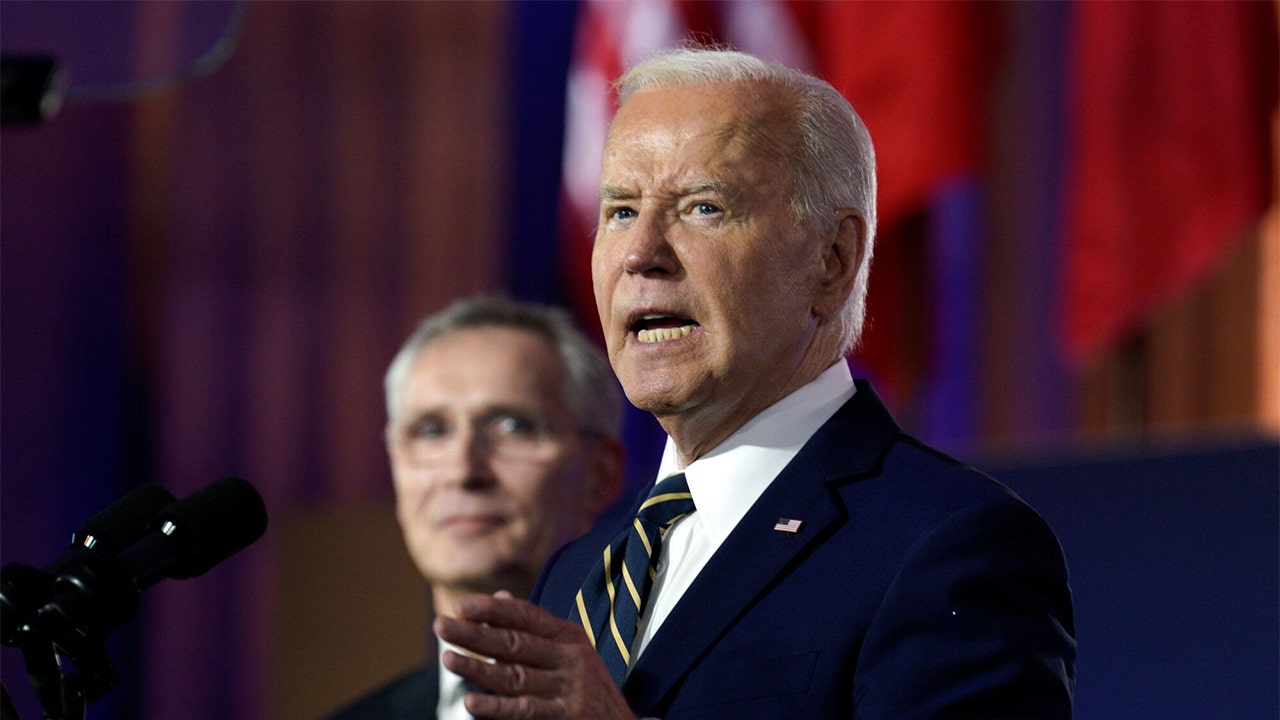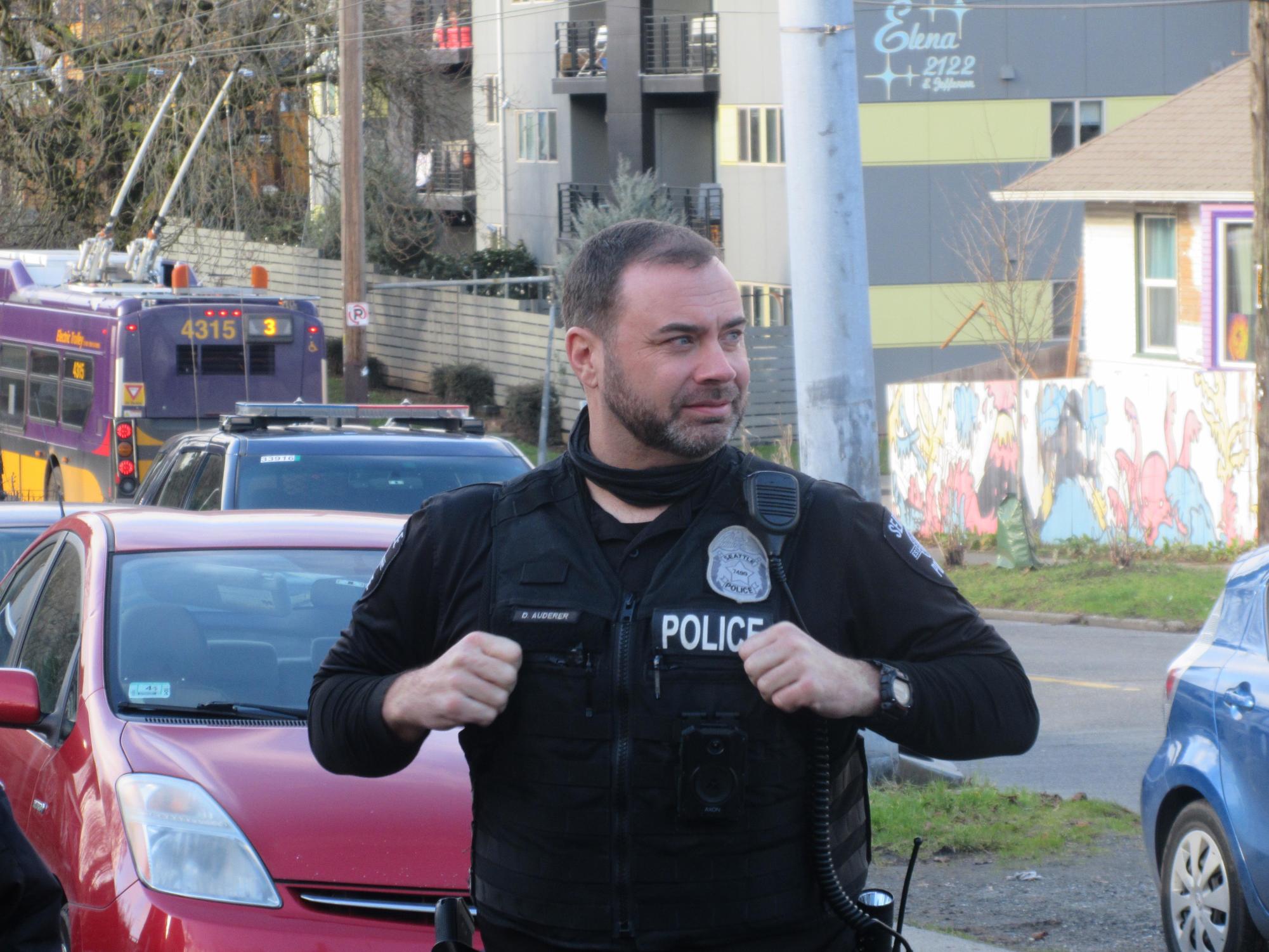North Dakota
Bearded dragons find a loving home in Emerado, North Dakota

EMERADO — Taking care of 120 small exotic animals might not be the average person’s ideal daily life. For Kendra Madsen, it is.
Madsen runs Home For Beardies, an unofficial bearded dragon sanctuary, from her house in Emerado. She began her work in California 15 years ago, and has continued it through her move to Texas and now North Dakota, where she’s lived for eight years. She runs the sanctuary with her fiance, Donovan Kennedy, who focuses on the financial side. To raise money for the sanctuary, Madsen and Kennedy have a donation box at Valley Petroleum Equipment in Grand Forks.
Along with bearded dragons — Madsen cares for 58 of them — Home For Beardies cares for 17 leopard geckos, nine frogs, nine tortoises, seven aquatic turtles, one tarantula, two scorpions and 17 parakeets, equaling 120 animals in total. Madsen says “everybody has their spot” in the house and the garage, with the special needs animals placed upstairs where they can be monitored. There’s even space outside for some of the animals while the weather is warm. Madsen also has a place in the garage where she breeds insects for the animals that require them in their diets.
Madsen says this position “fell into [her] lap” 15 years ago while working as a bartender in California. One of her regular customers came in with tanks full of animals and gave them to her after hearing her speak about the pets she kept. Madsen says she’s allergic to animals with fur, which led to her finding other kinds of animals to have as companions, such as lizards, frogs and snakes.
The process of surrendering a pet to Home For Beardies is more in-depth than that customer’s abrupt visit. It starts with connecting with Madsen through email, call or text, then answering questions about the reptile’s name, age and diet. Madsen also asks if the person surrendering would like for the pet to stay with Home For Beardies or be adopted by a new owner. Then the reptile is given to Home For Beardies, either through Madsen going to the owner or the owner going to her. The reptile is inspected for injuries or diseases, seen by a veterinarian and quarantined for 30 days. On the human side of things, Madsen tries to keep the process informal and easy.
“I want to make it as relaxing as possible and not stressful and no shaming, no anything, because nothing is worse than being shamed for surrendering your pet and feeling worse than you’re already feeling,” she said.
There are multiple reasons why someone might surrender a bearded dragon. The owner might not enjoy handling insects, a large part of a bearded dragon’s diet; the pet might have belonged to a child who is no longer interested in it and the parent doesn’t want to care for it; the pet requires more time and money than the owner can commit; the pet has special needs the owner can’t handle; the pet isn’t as affectionate as other animals and doesn’t bring the same “spark,” Madsen says, as cats or dogs.
There have even been a few instances of people surrendering their pet because they’re about to become homeless.
The process is often an emotional one.
“We have a lot of tears when people surrender because they’re sad because they don’t want to, but at the same time they know it’s for the better in a lot of cases,” Madsen said.
Along with taking in new bearded dragons, Home For Beardies offers several other services, such as boarding, hospice, nail trimming and teeth cleaning.
A struggle Madsen faces in North Dakota that she didn’t have in California and Texas is the lack of reptile care resources. When a veterinarian who specializes in reptiles isn’t available in Grand Forks, she has to drive to Fargo or look for other vets in the area.
“North Dakota has a long ways to go,” Madsen said.
Reptiles aren’t as popular in North Dakota as they are in other states, leading to less need for a veterinarian who specializes in reptile care. Madsen has noticed them becoming more popular, however, though it’s a recent development.
Madsen doesn’t have the words to describe how much she loves Home For Beardies, providing help for not only the animals, but for the humans who come to her for advice, services or to surrender their pets.
The animals she has also have their own individual personalities, and Madsen says the bearded dragons seem to enjoy listening to music and watching TV.
“I would not trade helping these animals out for the world because they bring a lot of joy at home,” she said.
Otto is a recent University of North Dakota graduate and reporter at the Herald.

North Dakota
NDGF taking proactive measures to prevent aquatic nuisance species from spreading

BISMARCK, N.D. (KFYR) – Aquatic nuisance species are nonnative plants, animals and pathogens that can threaten our aquatic resources. The North Dakota Game and Fish Department is taking proactive measures to stop the spread of ANS into our waterbodies by conducting watercraft inspections at popular boat ramps statewide.
“We got watercraft inspectors that are working throughout this summer around the state of North Dakota to check boats, to educate boat owners to do the right things at ramps, make sure boats are all clean, drain, dry before recreating here,” said Ben Holen, NDGF Aquatic Nuisance Species Coordinator.
What can anglers or watercraft recreationists expect when they come to an ANS inspection?
“A watercraft inspector will ask a few questions, only takes a couple minutes, and then they look at the hull of the boat. They’re looking at the engine area, looking at the anchor and also looking at all drain compartments, making sure all water is out of that watercraft. Everything is drained. Everything is cleaned, drained, dry before you get on that water body,” said Holen.
These watercraft inspections are voluntary and most people are cooperative and thankful the Game and Fish Department is spearheading efforts to stop the spread of ANS.
“We see a lot of our fishermen are really educated about aquatic nuisance species. They’re pulling their plugs every time, removing vegetation, doing the right things. Occasionally there are slip-ups, but that’s why our inspectors are out here making sure that those boats are good to go,” said Holen.
It’s not only fishing boats that are inspected, it’s all watercraft.
“So whether you’re a jet skier, a kayak, a canoer, a wakeboarder, you all play a part in curbing the spread of aquatic nuisance species in North Dakota,” said Holen.
The purpose of these inspections is to educate the public so they can help curb the spread of ANS.
“We can’t be at every ramp, every single circumstance, so hopefully some of these recreationists can take the tools that they learn from watercraft inspectors and apply them on their own when they’re out there recreating on their own and do a self-inspection,” said Holen.
The Game and Fish Department is committed to safeguarding our natural resources for future generations to enjoy.
“So we really, really like to keep it that way and keep these resources pristine for a long time,” said Holen.
For more information on Aquatic Nuisance Species, visit gf.nd.gov
Copyright 2024 KFYR. All rights reserved.
North Dakota
How gas prices have changed in North Dakota in the last week – 7/19/2024

STACKER — The typically busy summer driving season tends to lead to more demand for gasoline and, in turn, higher prices at the pump. But that hasn’t happened this summer, and analysts aren’t sure of the reason.
“[Drivers] appear to be staying off the road, and the recent scorching heat is possibly to blame. Maybe things will pick up soon,” AAA spokesperson Andrew Gross said in a statement Thursday, adding that prices could dip even lower.
Prices are several cents above their levels a month ago, but a gallon of gas is still cheaper than it was this same time last summer. The U.S. has been producing a large amount of gasoline to bolster domestic supply, another factor that can push prices downward. The total amount of gasoline in the U.S. supply is slightly above the five-year average, according to Energy Information Administration data.
Stacker compiled statistics on gas prices in North Dakota. Gas prices are as of July 19.
North Dakota by the numbers
– Gas current price: $3.39
– Week change: $0.00 (0.0%)
– Year change: -$0.08 (-2.3%)
– Historical expensive gas price: $4.80 (6/15/22)
– Diesel current price: $3.65
– Week change: -$0.01 (-0.2%)
– Year change: -$0.13 (-3.3%)
– Historical expensive diesel price: $5.62 (6/25/22)
Metros with most expensive gas in North Dakota
#1. Minot: $3.48
#2. Bismarck: $3.48
#3. Grand Forks (ND only): $3.27
#4. Fargo-Moorhead (ND only): $3.24
States with the most expensive gas
#1. California: $4.72
#2. Hawaii: $4.70
#3. Washington: $4.27
States with the least expensive gas
#1. Mississippi: $3.00
#2. Louisiana: $3.10
#3. Texas: $3.12
This article originally appeared on Stacker, and was produced and distributed through a partnership with Stacker Studio. It has been republished pursuant to a CC by NC 4.0 License.
North Dakota
Why is driving deadlier on North Dakota roads in the summer?

BISMARCK — With serious and fatal crashes consistently rolling in during the 100 deadliest days on the road between Memorial Day and Labor Day, North Dakota safety leaders are cautioning drivers about the “false sense of security” bright summer days can spark.
That sense of safety when the snow clears has earned North Dakota the unfortunate accolade of being named the state with the most reckless drivers by
Travel and Leisure.
While many point to high rates of intoxicated driving, cheap speeding tickets and the state’s rural road networks as reasons for crashes or reckless driving, officials in the state see a clear trend between summer driving conditions and catastrophic collisions.
During the 100 deadliest days, fatal crashes are twice as likely, according to the North Dakota Department of Transportation’s 2022 Crash Summary
report.
Since the end of May, there have been nearly 50 serious-injury or fatal crashes statewide, according to a Forum analysis of reports from the North Dakota Highway Patrol. Approximately one-third of those crashes were fatal, surpassing last year’s numbers at this point in the year.
Several of those crashes involved motorcyclists not wearing helmets and drivers or passengers not using seat belts.
A recent crash near Jamestown that left two children dead,
as well as the driver and another child critically injured, has officials emphasizing the risks of summer driving. The mother of the two boys said they were not wearing seat belts at the time of the crash.
Combining risk factors like not using restraints or safety gear with faster summer driving speeds can be a recipe for disaster.
“The clear roads and the good weather conditions often give people a false sense of security. They know that they can travel faster,” said Karin Mongeon, director of NDDOT’s Highway Safety Division.
“Really, the winter weather in North Dakota slows people down,” she said.
Mongeon works closely with Vision Zero, a government initiative created in 2018 aiming to decrease statewide fatalities by preventing reckless driving behaviors.
Chris Flynn / The Forum
The program prioritizes areas of concern based on statewide data submitted by county law enforcement. Prominent dangerous behaviors include drunken driving, lack of seat belt use and speeding.
Mongeon said that although any number above zero is devastating, there has been a decrease in road-related deaths in North Dakota since the initiative began.
From 2017 to 2022, fatalities decreased by over 15%, dipping below 100 and the national average for the first time in decades, according to the 2022 NDDOT crash summary. Of the 98 fatalities in 2022, 69% of people were not wearing seat belts, 38% of crashes were alcohol-related, 31% involved speed and or aggressive driving and 48% involved lane departures.

Contributed / North Dakota Department of Transportation
A 2023 report is set to be released in September, which will denote 106 deaths. Despite the spike, Mongeon said she anticipates the downward trend to continue.
Education and outreach have proven to be vital components of Vision Zero, according to Sgt. Jenna Clawson Huibregtse, the Highway Patrol’s safety and education officer.
Schools can designate themselves as Vision Zero schools, leaving it up to the students to pick their initiative, like distracted driving or wearing seat belts. Coordinators recruit by attending community events and sending representatives to school board meetings.
The Highway Patrol also recently began releasing crash information regularly on social media. Crash reports are also available on
the agency’s website.
“We’ve noticed that if we attach a face and a name and put all of our information in one place, that it is making a difference,” Clawson Huibregtse said.
“We live in such a great state; there’s responsible people driving every single day making good decisions, but we want people to be aware of the reality of what’s on the road and what our troopers see every day,” she said.
Another Vision Zero approach to safer roads involves physically rebuilding them.
Wider center and shoulder lines, roundabouts in place of intersections and more rumble strips are some projects keeping state engineers like Justin Schlosser busy. Since implementing more roundabouts alone, overall crash numbers have decreased by a
third, according to an NDDOT traffic study published earlier this month.
“If there’s a crash (in a roundabout), you’re going to have some kind of sideswipe or rear-end, which are typically less severe injury crashes than an angle crash, usually the most severe type of crash you can get into,” Schlosser said.
“There’s just a bigger emphasis on driver safety and making sure that we don’t lose any lives on our roadways, but Vision Zero has definitely put a higher emphasis on that and helped us get in the right direction,” he added.
Clawson Huibregtse pointed to another factor in reckless driving — speeding tickets.
North Dakota has some of the lowest citation fees in the nation, with amounts ranging from $5 to $100, depending on the zone. Offenders traveling 16 to 20 mph above the speed limit, for example, pay $15. Thirty-six to 45 over is a $70 fine and 46 mph-plus results in a $100 fine, as stated in the
Century Code.
“It’s just not a deterrent at all for people to not behave recklessly when they know that there’s really no financial penalty,” Clawson Huibregtse said. “And it shouldn’t come down to that, it should come to the life and limb thing, but it just comes down to people’s pocketbooks sometimes.”
Increasing citation amounts has been struck down at past legislative sessions. But with more public interest in the issue, Clawson Huibregtse said she wouldn’t be surprised if the topic resurfaces this coming session.
“We hope, the more we work together across agencies, that we’re going to bring that number to zero, or as close as we can to zero,” she said.
-

 News1 week ago
News1 week agoHow Democrats Will Choose a Nominee
-

 World1 week ago
World1 week agoWill the NATO Washington summit deliver for Ukraine?
-

 News1 week ago
News1 week agoVideo: Biden ‘Is a Fighter,’ Harris Says in North Carolina
-
News1 week ago
After a tragedy, a mother wants to soften the rooms where police interview victims
-

 Politics1 week ago
Politics1 week agoBiden's 'big boy' NATO news conference carries high stakes as first presser since disastrous debate
-

 Politics7 days ago
Politics7 days agoTwo key states to see massive GOP voter registration operation
-

 World1 week ago
World1 week agoJapan, Germany agree to boost security cooperation in Pacific
-

 Movie Reviews1 week ago
Movie Reviews1 week agoFilm Review: Fly Me to the Moon – SLUG Magazine



















